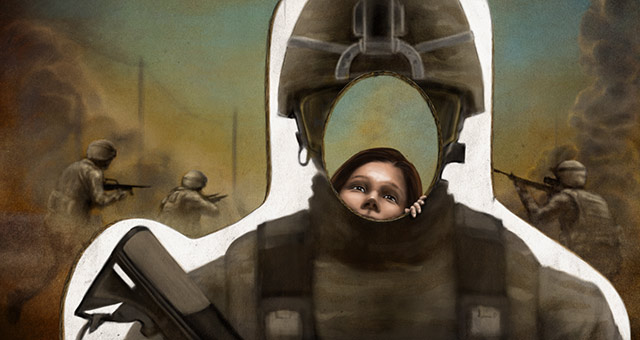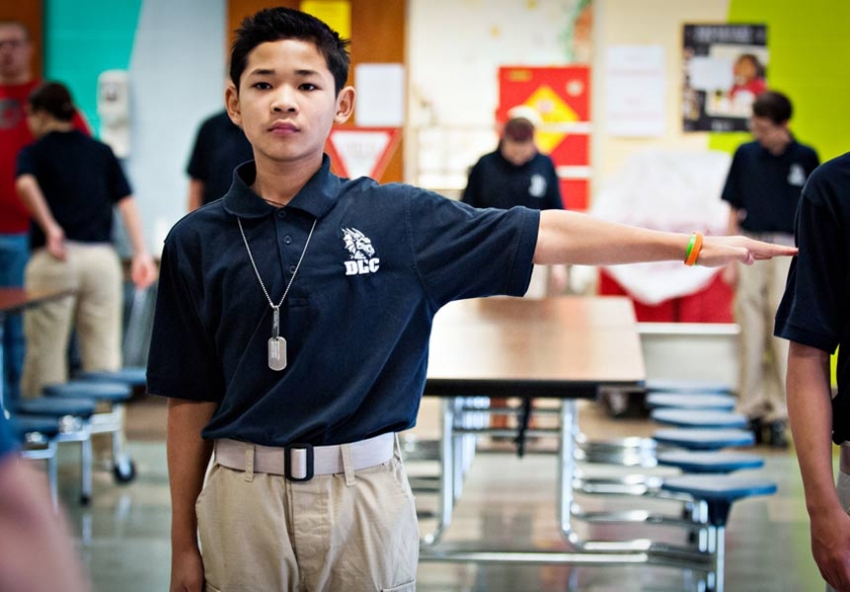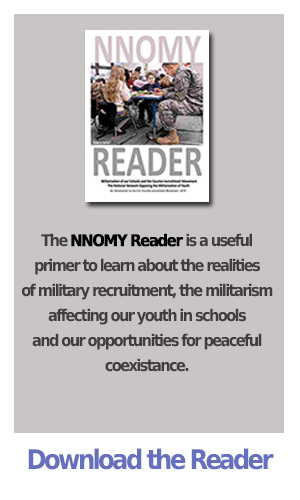 Draft registration is one of the ways that all young men (and possibly soon young women as well) have to interact with the military and think about their relationship to military “service”.
Draft registration is one of the ways that all young men (and possibly soon young women as well) have to interact with the military and think about their relationship to military “service”.
Almost all male U.S. residents, regardless of their citizenship, are supposed to register with the Selective Service System (SSS) when they reach age 18, and report each change of address to the SSS until they turn 26. The SSS maintains and regularly tests contingency plans for a general draft of young men (based on the current SSS list of registrants) and/or a separate “Health Care Personnel Delivery System” of men and women up to age 44 in 57 medical and related occupations (based on professional licensing lists). These plans could be activated at any time that Congress decides to reinstate either or both forms of a draft.
The SSS has trained volunteers in every state and county to serve as local draft boards and judge claims for exemption in the event of a draft, such as requests by draftees to be classified as conscientious objectors and allowed to perform non-combatant or alternative non-military service. Guidance counselors or other volunteers in some schools have also been deputized as SSS registrars.
Few young men comply fully with the draft registration law. Knowing and willful refusal to comply is a crime, but nobody has been prosecuted for draft resistance since 1986. To convict anyone of draft resistance, the government would have to prove that they knew they were required to register. This would be difficult unless someone has told the government, or said publicly, that they are deliberately refusing to register. In practice, there is no penalty for late registration, as long as you register before your 26th birthday, and no attempt at all to enforce the address change notice requirement. Many, perhaps most, induction notices sent to the addresses in SSS records would be undeliverable, or would be delivered to registrants’ parents’ homes (or former homes), rather than to the intended draftees.
Most young men who register with the SSS do so only when it is required as a condition of some other Federal or state government program. Men who haven’t register for the draft are ineligible for Federal student financial aid, Federal jobs, and some other Federal benefits. In some states, men of draft age are required to register with the SSS in order to obtain a driver’s license, or are automatically registered with the SSS (sometimes without even realizing it) when they get a driver’s license. Male immigrants of draft age must register with the SSS before they can be naturalized as U.S. citizens.
In 1981, the Supreme Court upheld requiring only men and not women to register for a draft. The court based its decision on deference to the military policy which, at that time, excluded women from combat assignments. Now that this policy has changed, it is likely that continued registration of men but not women will be found unconstitutional. Congress will soon have to decide whether to expand draft draft registration to young women as well as young men, or to end draft registration entirely.
Lawsuits against male-only draft registration are working their way through the courts. Meanwhile, Congress is conducting its most serious debate about the draft and draft registration in many years. Different bills have been introduced in Congress that would extend draft registration to women, end draft registration entirely and abolish the SSS, or attempt to restore the previous exclusion of women from military combat assignments and preserve male-only draft registration. Simlar provisions have been included or proposed for inclusion in other larger bills including the annual National Defense Authirzation Act. Any of these bills could be taken up for debate and vote at any time, possibly with little further warning.
NNOMY members and other organizations and individuals are working to:
- Provide information to potential draftees about their options with respect to Selective Service registration and the draft, including conscientious objection and resistance;
- Support and encourage conscientious objection, resistance, and other forms of individual and collective action against the draft by young people, health care workers, and others; and
- Support H.R. 4523 to end draft registration, abolish the Selective Service System, and repeal the Federal penalties for people who have not registered for the draft.
Urge Congress to end draft registration – Don’t extend it to women (PDF)
Links:
- Conscientious Objection and the Draft (Center on Conscience and War)
- Resisters.info (information about the draft, draft registration, draft resistance, and "Selective Service")
- MedicalDraft.info (information about the “Health Care Personnel Delivery System”)
- H.R. 4523 (“To repeal the Military Selective Service Act, and thereby terminate the registration requirements of such Act and eliminate civilian local boards, civilian appeal boards, and similar local agencies of the Selective Service System.”)
- Petition to the U.S. Congress: Abolish the military draft
- Petition: Tell Congress: Don't Force Women to Register for the Draft, Dump the Draft Entirely
Documents:
- What To Do If You Don't Want To Be Drafted (Resisters.info)
- Advice to Youth Facing Selective Service Registration (Center on Conscience and War)
- Making a Choice: Conscientious Objection or Refusing to Register (Resisters.info)
- Proposed “Health Care Personnel Delivery System” Regulations (54 Federal Register 33644-33655)
- Leaftlet: Support H.R. 4523 to End Draft Registration (Resisters.info)
Articles on the Web:
- National Commission on Military, National and Public Service (NCMNPS)
- Selective Service Registration: Coercion of Conscience (Center on Conscience and War)
- Women: Do not register for the draft. (Rivera Sun, PeaceVoice)
- Feminists weigh in on draft registration for women (Claire Schaeffer-Duffy, National Catholic Reporter)
- Don't Draft Women -- Or Men (Jack Perry, Resisters.info)
- Op-Ed: Dump draft registration, don't extend it to women (San Francisco Chronicle)
- Gender-Neutral Draft Registration Would Create Millions of Female Felons (US News & World Report)
- 10 Reasons Why Ending the Draft Helps End War (David Swanson)
- Hell, No! We Still Won't Go! (War Resisters League)
##
Revised 09/09/2018


 In 2012, Kate Connell—a photographer with two children in the Santa Barbara public schools—learned that her son’s freshman seminar had a Marine recruiter as a guest speaker. Her son had challenged the recruiter, saying he didn’t like the way the U.S. military was always bombing other countries. At first, Connell thought, “Oh, it’s great you spoke up for yourself and spoke up for peace.”
In 2012, Kate Connell—a photographer with two children in the Santa Barbara public schools—learned that her son’s freshman seminar had a Marine recruiter as a guest speaker. Her son had challenged the recruiter, saying he didn’t like the way the U.S. military was always bombing other countries. At first, Connell thought, “Oh, it’s great you spoke up for yourself and spoke up for peace.”

 Last year, Henry F. Moss Middle School in Bowling Green, Ohio, offered students a brand new course. And, as a headline in the local newspaper proclaimed, this was “not your traditional class.” For starters, the teacher—an army sergeant—had told the Bowling Green Daily News that one of his goals was to expose these seventh- and eighth-graders to “military values” that they could use as “building blocks” in life. To that end, students in the class earn military style ranks, engage in army-style “PT” (physical training) and each Wednesday, wear camouflage pants and boots.
Last year, Henry F. Moss Middle School in Bowling Green, Ohio, offered students a brand new course. And, as a headline in the local newspaper proclaimed, this was “not your traditional class.” For starters, the teacher—an army sergeant—had told the Bowling Green Daily News that one of his goals was to expose these seventh- and eighth-graders to “military values” that they could use as “building blocks” in life. To that end, students in the class earn military style ranks, engage in army-style “PT” (physical training) and each Wednesday, wear camouflage pants and boots.




